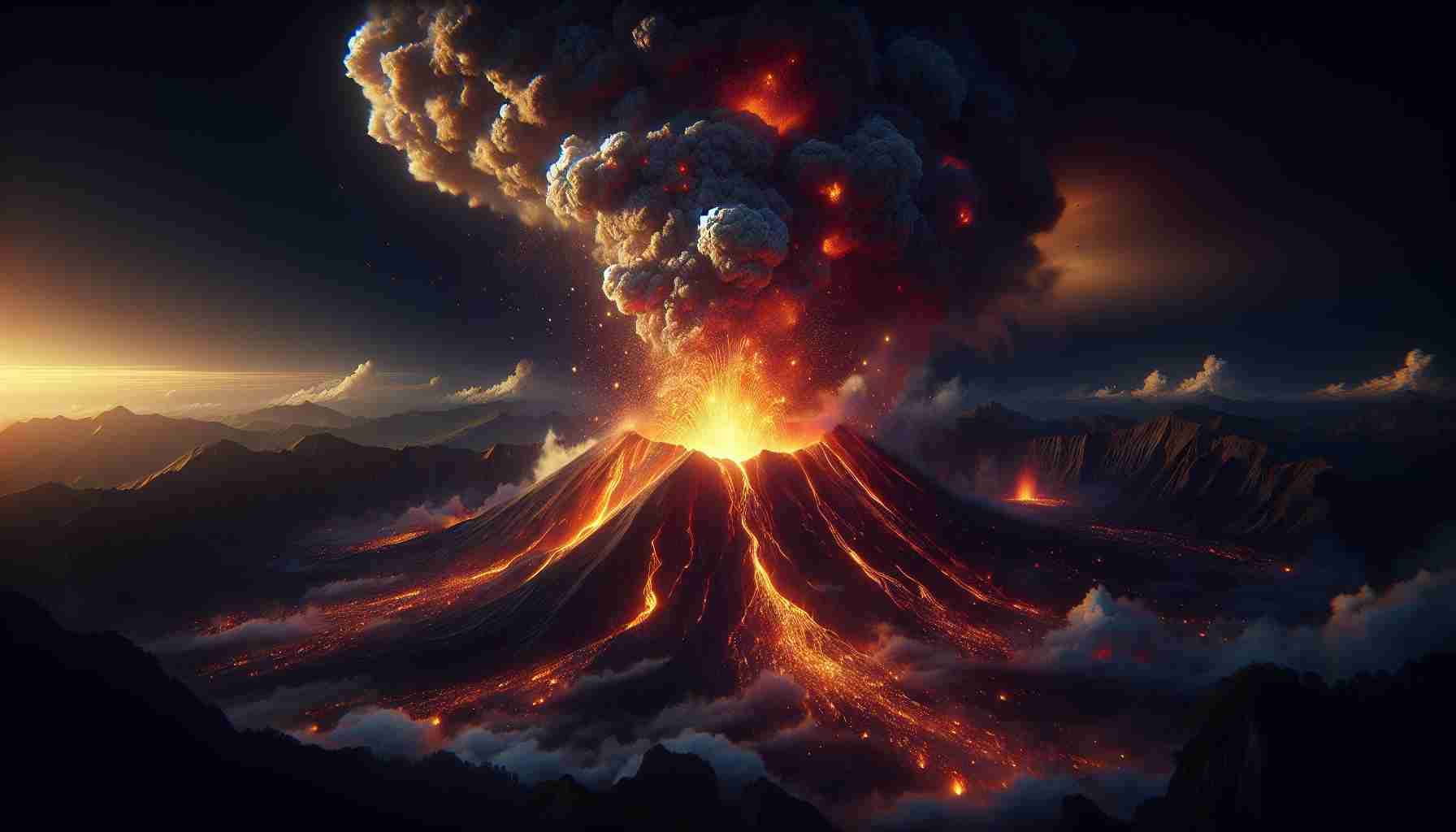Explosive Activity at Sakurajima
In the early hours of the 23rd, Sakurajima volcano unleashed a significant explosive eruption at 2:43 AM, sending an impressive column of volcanic ash soaring about 2,500 meters into the sky. The ash plume drifted eastward, creating a dramatic spectacle for nearby residents.
This eruption, marking the 20th of the year, was particularly notable, as large volcanic rocks were ejected from the crater, landing as far as 600 to 900 meters from the source, reaching the 7th stage on the slope of the mountain. The eruption is not only a geological event but also poses risks to safety and air quality in the surrounding areas.
As a result of this ongoing volcanic activity, authorities have maintained a volcanic alert level 3, which restricts entry into certain areas around the volcano. Despite the precautionary measures, locals are advised to remain vigilant, especially with ash fall forecasts extending over the next couple of days.
The volcanic landscape of Sakurajima is known for its beauty and danger, captivating many visitors. The latest eruption serves as a stark reminder of the powerful forces of nature at play in this region of Japan. For continuous updates, the authorities are closely monitoring the situation and providing timely information to ensure public safety.
Broader Implications of Sakurajima’s Eruptions
The recent explosive activity at Sakurajima underscores the interconnectedness of nature and human society, while raising fundamental questions about resilience. Volcanic eruptions have profound implications for the local economy, especially in regions reliant on tourism and agriculture. Following this eruption, the immediate fallout may deter tourists who flock to view both the natural beauty and the danger inherent in volcanoes, potentially impacting local businesses that thrive on visitors attracted to this unique geological hotspot.
Additionally, ashfall can significantly affect agriculture, contaminating crops and leading to economic losses for farmers. Given that Japan ranks among the world’s top agricultural nations, even brief disruptions can resonate through the global food supply chain. Furthermore, increased volcanic activity contributes to air quality issues, affecting respiratory health in nearby populations and straining healthcare systems.
Looking to the future, scientists warn that climate change may intensify volcanic activity due to alterations in tectonic stresses. Such trends signal a growing urgency for disaster preparedness and climate resilience strategies, emphasizing the need for communities to adapt to both explosive events and their long-term consequences. Ultimately, the events at Sakurajima serve as a potent reminder of our vulnerability to natural forces and the necessity for sustainable practices in the face of unpredictable geological phenomena.
Unraveling the Fury: What You Need to Know About Sakurajima’s Latest Eruption
Overview of Sakurajima’s Volcanic Activity
The Sakurajima volcano, located in Kagoshima Prefecture, Japan, is one of the most active volcanoes in the world. On the 23rd of this month, it erupted explosively at 2:43 AM, ejecting ash up to 2,500 meters in the air and releasing volcanic rocks that landed as far as 900 meters from the vent. This recent eruption marks a total of 20 eruptions within the year alone, underscoring the volcano’s persistent activity.
Features of the Latest Eruption
– Eruption Height: The ash plume reached approximately 2,500 meters above sea level.
– Ejecta Distribution: Volcanic boulders were projected between 600 to 900 meters from the crater, indicating a strong explosive force characteristic of significant volcanic activity.
– Alert Level: The Japan Meteorological Agency has maintained a volcanic alert level 3, which advises against entering certain restricted zones around the volcano.
Safety Measures and Emergency Protocols
Authorities are closely monitoring Sakurajima’s activity and have implemented measures to ensure public safety:
– Evacuation Plans: Local residents within the designated danger zones are prepared for possible evacuations if the eruptions intensify.
– Air Quality Management: Due to potential ash fall, air quality is being monitored to prevent health risks associated with volcanic ash inhalation.
– Community Preparedness: Educational initiatives are in place to educate the local population on volcanic safety and emergency response.
Usage and Tourism Implications
Sakurajima is not only a site of scientific interest but also a popular tourist destination, attracting visitors drawn by its stunning vistas and dynamic geological activity. However, with the ongoing eruptions:
– Travel Restrictions: Tourist access has been regulated in certain areas to ensure safety.
– Educational Tours: Some tours may still operate, focusing on volcanic education and safe observation points.
Limitations and Risks
While Sakurajima is a marvel of nature, the continuous eruptions pose several risks:
– Property Damage: Ongoing volcanic activity can lead to property destruction, particularly for structures within the ash fall zones.
– Economic Impact: Local businesses that depend on tourism may face disruptions due to heightened warning levels and restricted access.
– Infrastructure Stress: The ash can impact transportation and infrastructure, making roads dangerous and affecting air travel.
Future Predictions and Monitoring Trends
Experts predict that Sakurajima’s activity may continue, given its historical patterns of eruptions. Continuous monitoring by the Japan Meteorological Agency and geological institutes is vital in making accurate predictions about future eruptions.
Concluding Insights
The latest developments at Sakurajima highlight the delicate balance between nature’s beauty and its inherent dangers. Continuous vigilance, public education, and swift emergency protocols are essential in managing the risks associated with this powerful volcano. For real-time updates and more detailed information on Sakurajima, you can check the Japan Meteorological Agency.
Stay alert, stay informed, and always prioritize safety when near volcanic regions!
